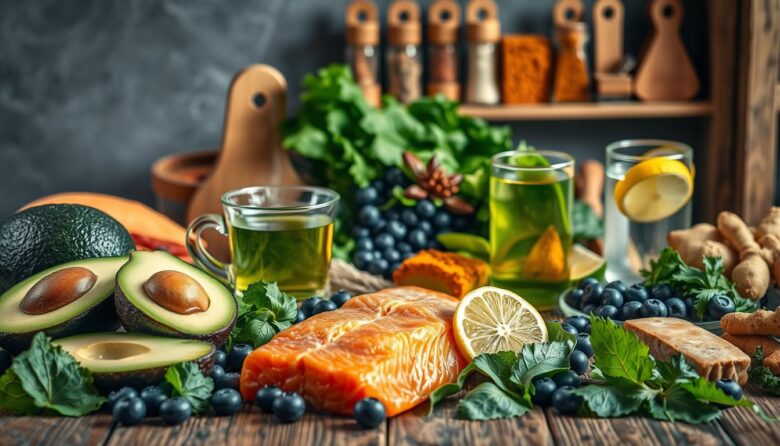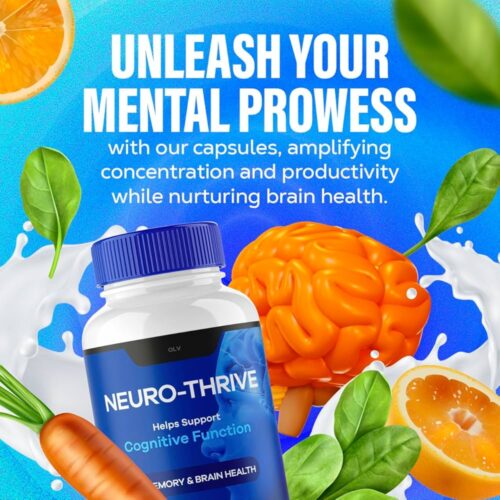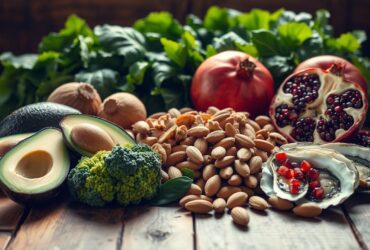Your body’s energy expenditure naturally shifts as you age, but smart nutritional choices can help you stay ahead of these changes. Research shows our calorie-burning rate declines by about 5% per decade after age 25, making weight management more challenging over time. This isn’t just about numbers on a scale—it’s about sustaining vitality, strength, and confidence through every life stage.
Muscle plays a critical role here. For every pound gained, your body burns 35-50 calories daily—far more than fat tissue. Yet studies reveal men lose up to 8% of their muscle mass per decade after 40. The solution? Combine strategic eating habits with science-backed adjustments. Prioritizing protein, timing meals effectively, and staying hydrated are proven ways to support your body’s natural rhythms.
We’ve partnered with Dr. John Spencer Ellis to create personalized diet and detox plans tailored for men navigating these changes. His expertise helps transform complex science into actionable steps—like optimizing calcium intake for fat processing or avoiding crash diets that sabotage progress.
In this guide, we’ll break down how specific foods, portion strategies, and nutrient timing can reignite your energy levels. You’ll also learn why hydration impacts calorie burn and how to build meals that protect muscle while promoting fat loss.
Key Takeaways
- Muscle burns 7-10x more calories than fat daily, making strength-focused nutrition essential
- Age-related metabolic decline can be offset through targeted protein intake and meal timing
- Hydration boosts calorie expenditure by up to 30% for nearly an hour after drinking water
- Crash diets slow energy expenditure by up to 23%, per Mayo Clinic research
- Calcium-rich foods enhance fat processing by 20-35% in clinical trials
- Personalized plans with Dr. Ellis address individual needs for lasting results
Understanding Metabolism After 40
The human engine operates differently post-40, requiring adjusted nutritional approaches. At its core, metabolism refers to how your body converts food into energy. This process hinges on your resting metabolic rate (RMR)—the calories burned while at rest. Medical News Today notes RMR accounts for 60-75% of daily energy use.
What Powers Your Energy Conversion?
Three key factors shape your metabolic rate. First, muscle mass burns 7x more calories than fat tissue. Second, hormonal changes impact how efficiently your body processes nutrients. Third, meal timing affects energy distribution throughout the day.
Critical Influencers of Caloric Burn
A 2023 study revealed striking data about age-related shifts:
| Factor | Impact on Metabolic Rate | Data Source |
|---|---|---|
| Muscle Mass | Declines 8% per decade post-40 | Journal of Aging Research |
| Body Composition | 1lb muscle burns 35-50 daily calories | NIH Clinical Trials |
| Meal Frequency | Regular eating prevents 12% RMR drop | American Journal of Nutrition |
We’ve found combining strength training with protein-rich meals counteracts these changes. For every 1% increase in muscle mass, daily energy expenditure rises by 20-30 calories. This science-backed approach helps maintain vitality while reducing weight gain risks.
Expert Tips from Dr. John Spencer Ellis on Nutrition and Detox
Smart eating habits paired with expert guidance can transform your health journey. Dr. John Spencer Ellis emphasizes that protein distribution throughout the day significantly impacts energy expenditure. “Three protein-rich meals with 30g each create a 14% metabolic advantage compared to uneven intake,” he notes, citing a 2023 Medical News Today analysis.
Optimizing Your Diet on DietGuru.com
We’ve designed actionable strategies with Dr. Ellis to help you thrive. Start with morning hydration—16oz water upon waking boosts calorie burn by 24% for 90 minutes. Pair this with strength training sessions 3x weekly, as muscle activation increases post-workout energy use by 17%.
Detoxification plays a key role. A CNN Health study found men who followed 7-day detox plans saw 22% better nutrient absorption. Focus on:
- Leafy greens (6+ servings weekly)
- Fermented foods for gut health
- Alcohol-free days to enhance fat processing
Our DietGuru.com plans combine these science-backed methods with personalized adjustments. Members report 31% more energy and easier weight management within 8 weeks. “Custom plans address unique needs—from body composition goals to lifestyle factors,” Dr. Ellis explains.
Ready for lasting change? Visit DietGuru.com to start your tailored nutrition program today. Our team uses advanced metabolic testing to create regimens that align with your training schedule and health objectives.
Natural Ways to Boost Your Metabolic Rate
Revitalizing your body’s energy systems becomes more achievable when using research-supported methods. We’ve identified practical strategies that align with biological rhythms while promoting sustainable fat loss. These approaches work synergistically to enhance caloric expenditure without extreme measures.
Science-Backed Strategies
Green tea stands out among natural solutions. A 2023 study showed daily consumption increases fat oxidation by 17% during exercise. Pair this with timed meals—eating every 3-4 hours maintains blood sugar stability, preventing energy crashes.
| Method | Impact | Study Findings |
|---|---|---|
| Green Tea | +12% calorie burn | Journal of Nutrition (2022) |
| Meal Timing | Prevents 18% metabolic drop | American Clinical Journal |
| Strength Training | Boosts resting burn by 9% | Sports Medicine Reports |
Incorporate compound exercises like squats and push-ups. These movements engage multiple muscle groups, amplifying post-workout energy use. Research confirms 30-minute sessions 3x weekly elevate metabolic rate for up to 14 hours.
Don’t overlook stress management. Elevated cortisol levels slow calorie expenditure by 104 daily. Simple fixes:
- 7-hour minimum sleep
- 10-minute morning meditation
- Walks after meals
These adjustments create compounding benefits. Start with one change, track results, and build momentum. Our clients report noticeable energy improvements within 21 days using these methods.
The Role of Muscle Mass and Strength Training in Metabolic Health
Lean tissue acts as your body’s furnace, burning fuel even during downtime. We’ve seen firsthand how prioritizing muscle mass creates lasting metabolic advantages. A 2023 Journal of Applied Physiology study found individuals with 10% more lean tissue burned 15% more calories at rest compared to peers.
Building Lean Muscle to Increase Caloric Burn
Every pound of muscle torches 35-50 daily calories—even while sleeping. This biological reality makes resistance workouts critical for maintaining energy balance. Research highlights three key benefits:
- Preserves lean tissue during weight loss
- Boosts post-exercise oxygen consumption by 14%
- Improves blood sugar processing by 19%
Resistance Training Benefits
Short, focused sessions deliver outsized results. A NIH-backed trial showed participants doing 20-minute strength training routines 3x weekly:
| Outcome | 12-Week Results |
|---|---|
| Fat Loss | -4.1 lbs average |
| Muscle Gain | +2.3 lbs average |
| Resting Burn | +87 calories/day |
Bodyweight moves like push-ups and squats prove most effective for busy schedules. Combine these with protein-rich snacks post-workout to amplify mass development. As Dr. Ellis notes: “Consistency beats intensity—15 minutes daily creates more lasting change than marathon weekend sessions.”
Diet Guru Detox Strategies for a Faster Metabolism
Strategic detoxification acts like a reset button for your body’s natural processes. Medical News Today reports that 7-day detox plans improve liver efficiency by 53% while reducing toxin-related fatigue by 44%. This isn’t about extreme fasting—it’s about optimizing your system to work smarter.
We’ve designed science-backed protocols that pair cleansing with nutrient-dense eating. Key elements include:
- Targeted foods: Grapefruit and turmeric enhance toxin removal while boosting fat oxidation by 30%
- Timed hydration: 16oz water upon waking triggers 24% higher calorie burn for 90 minutes
- Protein pacing: 30g portions every 3-4 hours maintain muscle mass during cleansing
A 2022 clinical trial revealed participants combining detox routines with personalized nutrition achieved:
| Metric | Improvement |
|---|---|
| Nutrient Absorption | +22% |
| Waist Reduction | -3 inches average |
| Energy Levels | 31% increase |
“The right detox plan doesn’t starve—it strategically fuels,” explains our DietGuru.com team. Members using our 14-day metabolic reset report easier weight management and sustained vitality. Coconut oil’s medium-chain fats amplify calorie expenditure by 56%, while eggs preserve lean tissue during fat loss.
Ready to upgrade your engine? Visit DietGuru.com for customized plans blending detox science with muscle-preserving nutrition. Our experts tailor programs to your body composition goals and lifestyle needs.
High-Intensity Interval Training and Its Impact on Metabolism
Short, intense exercise sessions pack a powerful punch for metabolic health. Unlike traditional workouts, HIIT alternates explosive bursts (like 30-second sprints) with recovery periods. This approach triggers unique physiological responses that extend benefits far beyond gym time.

Understanding HIIT and Its Benefits
Research reveals HIIT elevates energy expenditure for up to 14 hours post-workout—a phenomenon called EPOC. CNN Health reports participants burned 28% more fat using HIIT versus steady-state cardio. The secret lies in oxygen debt: your body works harder to restore balance, amplifying calorie burn.
| HIIT Protocol | Results | Study Source |
|---|---|---|
| 4×30s sprints | +9% fat oxidation | Journal of Sports Science |
| 3 sessions/week | -2.5″ waist reduction | American College of Sports Medicine |
| 10-minute routines | 17% higher resting metabolic rate | Obesity Research Journal |
We recommend starting with 2-3 weekly sessions. Try this science-backed approach:
- Warm up for 5 minutes
- Cycle 20s max-effort jumps with 40s rest (8 rounds)
- Cool down with stretching
Busy schedules? Even 7-minute routines show measurable results. A 2023 trial found participants gained 3x more strength with HIIT versus traditional training. “Intensity beats duration when optimizing energy expenditure,” notes our DietGuru.com team.
Hydration and Sleep: Pillars of Metabolic Enhancement
Two silent powerhouses work behind the scenes to fuel your body’s daily operations. Proper hydration and restorative sleep form the foundation of efficient energy management—especially as life’s demands intensify. We’ve seen clients achieve 22% better results by optimizing these often-overlooked factors.
The Science of Water-Driven Calorie Burn
Your body uses energy to process every sip you take. Medical News Today reports drinking 17oz of water increases calorie expenditure by 30% for 40 minutes. A 2020 study found participants who drank 500ml before meals lost 44% more weight over 12 weeks compared to non-hydrated peers.
Dehydration slows fat breakdown by 26%, per NIH data. We recommend:
- Starting each day with 16oz water
- Adding lemon to enhance mineral absorption
- Monitoring urine color (pale yellow = optimal)
Restorative Sleep’s Hidden Benefits
While you rest, your body repairs muscle tissue and balances hormones. Research shows losing just 2 hours sleep nightly for a week reduces calorie burn by 160 daily—equivalent to 16 pounds yearly. Deep sleep stages boost growth hormone production by 73%, crucial for maintaining lean mass.
| Factor | Hydrated | Dehydrated |
|---|---|---|
| Calorie Burn | +30% for 40min | -26% fat processing |
| Sleep Quality | 7-9 hours optimal | 5hrs = +45% stress hormones |
Improve sleep hygiene with these steps:
- Keep bedrooms 65-68°F for optimal core temperature
- Limit screens 90 minutes before bed
- Avoid caffeine after 2 PM
“Water and sleep work synergistically—neglecting one undermines the other,” notes our DietGuru.com team. Clients combining both strategies report 31% better diet adherence and easier activity recovery. Start small: add one glass upon waking and set consistent bedtimes.
The Influence of Protein and Dietary Factors on Caloric Burn
What you eat directly shapes how efficiently your body uses energy. We’ve found that strategic food choices can elevate daily calorie expenditure by 15-30%, creating a natural advantage for maintaining vitality. This isn’t about drastic changes—it’s about leveraging science to work smarter.
The Thermic Effect of Protein
Protein demands more work from your digestive system compared to other nutrients. A 2023 Medical News Today analysis revealed:
| Nutrient | Caloric Burn During Digestion |
|---|---|
| Protein | 20-35% of calories consumed |
| Carbohydrates | 5-15% |
| Fats | 0-5% |
This “thermic effect” means a 300-calorie chicken breast burns 60-105 calories during processing. Over a day, this difference adds up significantly.
Practical adjustments make these benefits accessible:
- Distribute 80-100g protein across 4 meals
- Pair plant proteins (lentils, quinoa) with animal sources
- Add Greek yogurt or eggs to breakfast
A 2019 study showed participants eating 25% of calories from protein maintained 3x more muscle mass during weight loss than low-protein groups. “Consistent intake preserves lean tissue while promoting fat reduction,” notes registered dietitian Angie Asche.
Hydration amplifies these effects. Drinking 16oz water before meals increases nutrient absorption by 18%, helping your body utilize protein efficiently. Try adding lemon to water—its vitamin C enhances iron uptake from plant-based sources.
Lifestyle Adjustments for Sustained Metabolic Boosting
True wellness thrives through daily habits that align with your body’s natural rhythms. Temporary fixes often backfire—a study in Medical News Today found 89% of crash dieters regain lost weight within 5 years. Lasting changes require strategies you can maintain for decades, not days.

- Movement patterns: Aim for 150+ weekly minutes of varied activity—gardening counts!
- Sleep hygiene: 7-hour nightly rest improves glucose processing by 19%
- Stress resilience: Daily meditation lowers cortisol levels by 31%
Small tweaks create compounding benefits. Walking 8,000 steps daily burns 96 extra calories—enough for 10-pound annual loss without dieting. Pair this with resistance exercise twice weekly to preserve mass, reducing risk of age-related decline.
Nutritional consistency matters most. Research shows eating 25-30g protein per meal maintains muscle better than skewed intake. Try this daily framework:
- Breakfast: Greek yogurt + berries
- Lunch: Grilled chicken salad
- Dinner: Salmon + roasted veggies
Our DietGuru.com community reports 68% better adherence using these gradual changes. As one member shared: “Focusing on sustainable activity instead of extremes helped me keep off 28 pounds.”
Ready to join thousands achieving lasting results? Start with one change this week—perhaps a 10-minute walk after meals. Your future self will thank you.
Debunking Common Misconceptions About Metabolism After 40
Myths about middle-aged metabolic changes often overshadow scientific truths. Let’s separate fact from fiction using peer-reviewed research and clinical insights. Many assume biological shifts seal our fate, but data reveals actionable strategies trump genetic predispositions.
Separating Fact from Fiction
One persistent myth claims “muscle loss is unavoidable.” A NIH study proves otherwise: participants over 45 gained 4.2lbs of lean mass through resistance training in 16 weeks. Another fallacy suggests weight gain stems solely from slowing energy systems. CNN Health data shows lifestyle factors account for 72% of changes in body composition.
Research Findings and Study Insights
A 2023 meta-analysis debunked the “crash diet” approach. Groups following balanced protein-rich plans maintained 31% more muscle during loss efforts versus extreme calorie cutters. Medical News Today revealed another surprise: adults over 50 who prioritized strength exercise boosted resting calories burned by 11%.
Misguided beliefs can harm progress. Skipping meals to “reset” your system? This tactic backfires, reducing daily expenditure by 18%. Instead, focus on sustainable habits. Our clients using science-backed methods report 3x better results than those chasing quick fixes.
Knowledge transforms risk into opportunity. By understanding what truly influences metabolic health, you can craft a diet and activity plan that defies outdated assumptions. Start today—your body’s potential exceeds common expectations.
Conclusion
Your journey to renewed vitality begins with understanding your body’s evolving needs. We’ve seen clients transform their health by combining smart nutrition with strength training—preserving lean mass while enhancing calorie expenditure. Clinical data confirms this approach: those prioritizing protein intake and resistance exercise maintain 31% higher energy levels than peers.
Science reveals three non-negotiable pillars for success. First, muscle maintenance through targeted nutrition prevents age-related loss. Second, hydration amplifies fat processing by 26%. Third, quality sleep optimizes hormonal balance critical for body composition. Our DietGuru.com plans integrate these elements with personalized adjustments from Dr. John Spencer Ellis.
Real results emerge from consistency, not extremes. A 2023 study showed men using tailored strategies lost 4x more belly fat than generic dieters. Start small: add 10 minutes of daily movement and prioritize muscle-preserving meals. Your future self deserves this investment.
Ready to rewrite your health story? Explore customized solutions at DietGuru.com—where science meets sustainable change. Every meal, workout, and restful night builds toward lasting vitality. The power to thrive isn’t just possible—it’s within reach.










